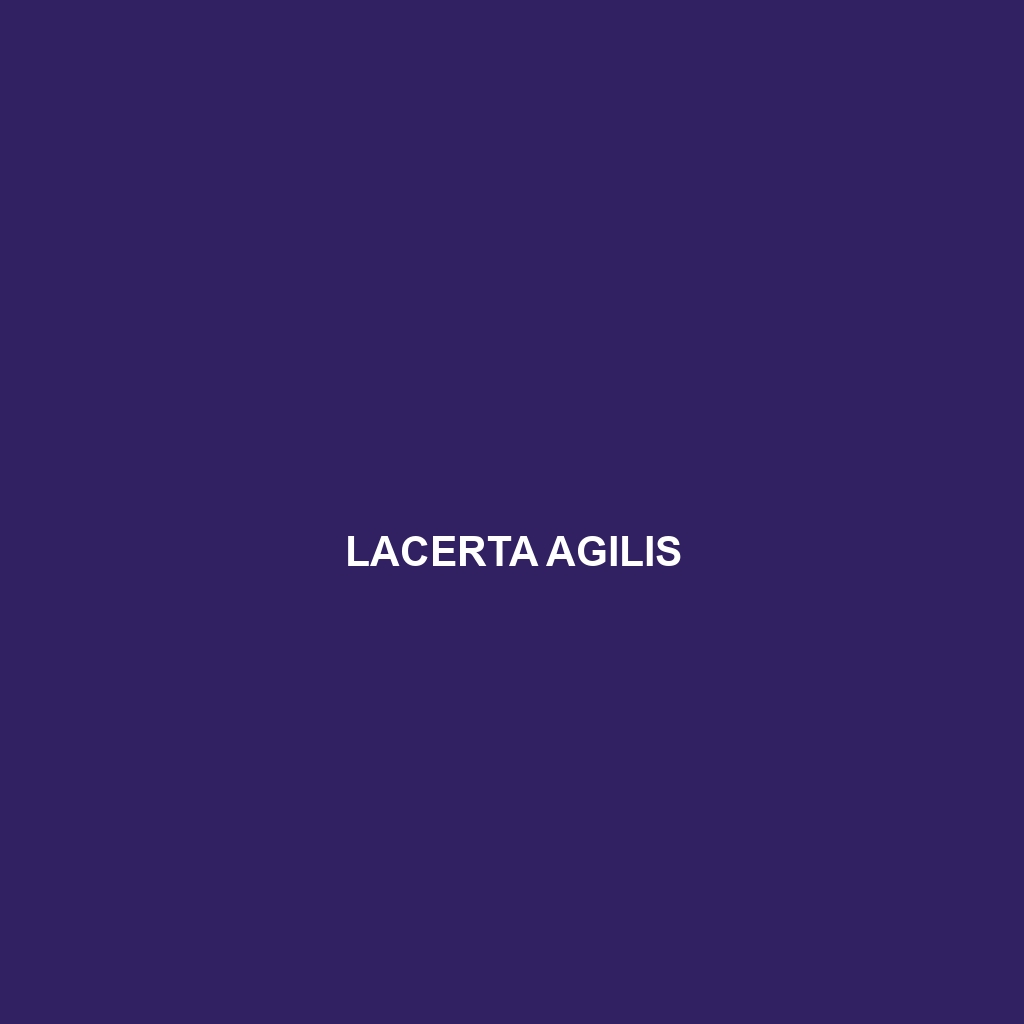Common Name
Lacerta agilis
Scientific Name
Lacerta agilis
Habitat
Lacerta agilis, commonly known as the sand lizard, is primarily found in Europe and parts of Asia. Its preferred habitats include dry, sandy soils, heathlands, and open woodland areas. This species favors temperate regions characterized by a continental climate, featuring warm summers and cold winters. Other common environments include grasslands and scrublands, where sunlight is abundant, providing ample basking opportunities. While the population is predominantly terrestrial, Lacerta agilis often thrives in disturbed areas such as gardens and roadsides, showcasing its adaptability to human-altered landscapes.
Physical Characteristics
This medium-sized lizard typically measures between 7 to 8 inches (16 to 20 cm) in length. Lacerta agilis exhibits sexual dimorphism, with males generally characterized by a vibrant green coloration during the breeding season, which contrasts starkly with the more muted brown or grayish hues of females. Both sexes are covered in small, granular scales, providing excellent camouflage against the sandy and leaf-littered ground. Distinctive features include a long tail and a body that tapers towards the head. Young sand lizards are often mottled brown and can easily be mistaken for other lizard species until they reach maturity.
Behavior
Typical behaviors of Lacerta agilis include active foraging during the day. They are known for their quick escapes into vegetation or burrows at the slightest hint of danger. Social interactions often emerge during the mating season when males display vivid colors and engage in ritualized combat to attract females. While usually diurnal, this species has also exhibited occasional crepuscular activity in areas with high predation pressure. Mating rituals involve elaborate displays and courtship behaviors, such as head bobbing and chasing.
Diet
Lacerta agilis is primarily an insectivore, thriving on a diet composed mainly of invertebrates such as crickets, grasshoppers, and beetles. Occasionally, it may consume small plant matter, making it a generalist in its dietary habits. This lizard actively hunts small prey by stalking and ambushing, showcasing quick reflexes that aid in capturing fast-moving insects. Its ability to consume a variety of invertebrates aids in controlling pest populations within its habitat.
Reproduction
The reproductive cycle of Lacerta agilis typically occurs during spring, which marks the onset of warmer weather. Males display bold colors to attract females, engaging in various courtship behaviors. After mating, females lay 5 to 15 eggs in a sandy or loose substrate by the end of June or early July. The incubation period lasts about 6 to 12 weeks, depending on environmental conditions, with hatchlings emerging in late summer. Parental care is absent; thus, the young are independent from birth, relying on their instincts to survive.
Conservation Status
According to the International Union for Conservation of Nature (IUCN), Lacerta agilis is currently listed as “Least Concern”. However, some local populations face threats from habitat destruction and fragmentation, primarily due to urbanization and agricultural expansion. Conservation efforts focus on habitat preservation and public awareness campaigns to protect natural habitats where this species thrives. Continuous monitoring of populations is vital to ensure the long-term sustainability of Lacerta agilis.
Interesting Facts
One interesting aspect of Lacerta agilis is its ability to change coloration based on environmental factors; during colder months, they tend to darken to absorb more heat. Furthermore, this species has been known to utilize their long tails as a defense mechanism, often escaping from predators while leaving part of their tail behind. This regeneration ability, although not as robust as some other species, still aids in their survival.
Role in Ecosystem
Lacerta agilis plays a crucial role in its ecosystem as both a predator and prey. By feeding on insects, it helps control pest populations, contributing to ecological balance. Additionally, as prey for larger predators like birds of prey and snakes, they are an integral part of the food web. Their presence signifies a healthy and biodiverse environment, making them valuable indicators of ecological stability. The sand lizard also contributes to soil aeration and nutrient cycling through their burrowing habits.
This detailed, SEO-optimized species description provides a comprehensive overview of Lacerta agilis, covering various aspects of the lizard’s life and ecology, using relevant keywords and structured in HTML format for optimal online visibility.
